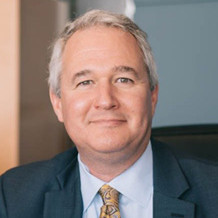Your Intentions Might Be Good Enough … Thanks to the Heggstad Petition

“The road to hell,” the old saying goes, “is paved with good intentions.” So, it seems, are some people’s estate plans.
Who doesn’t know someone who wanted to make an important addition to their estate plans (like moving a piece of property into their trust) but died before they could do it?
There are plenty of reasons why this happens—ever heard of “human nature” or “procrastination” before? The prospect of contacting a lawyer and dealing with the time and paperwork involved to make these changes can be discouraging for a settlor. It can also be especially discouraging if he or she is coping with a serious illness and doesn’t have the energy to go through with it.
For a long time, wanting to transfer property into a trust had been regarded (rightfully) as different from actually doing it—at least that’s what the California courts said until a case came up involving the estate of the Heggstad family back in 1993.
Don’t know that name? If someone in your family dies before transferring all of their property or other assets into their trust, what happened to the Heggstads could make a big difference on what happens when the trust’s executor distributes the assets.
Interrupted Plans
In the late 1980s, before Mr. Halvard L. Heggstad passed away, he executed his living trust and identified the items that he wanted to include in—and transfer into—his trust with a document that is common to all trusts, a Schedule of Assets.
Listed on Heggstad’s schedule was a Menlo Park property in which he held a 34.78% interest as a co-owner.
Even though that property interest was included in his trust’s schedule, it was mislabeled as a “partnership interest” which probably explains why the title was never properly transferred to his trust.
After his death, his son Glen—who served as executor—went through the schedule and discovered this mistake. He sought help from the court, claiming that it was his father’s intention to include the property—like all of his other real estate holdings—in the trust. His son used the trust’s Schedule of Assets as a sign of that intention.
Despite the objections of Glen’s stepmom, the court ruled that having assets listed on such a schedule was sufficient evidence that those assets were intended for the trust. Because of the Heggstad court case, adding assets into a trust after the settlor’s death is possible as long as the family can show that it was the settlor’s intentions.
The court’s decision for the Heggstad family resulted in a change that can have a big impact on beneficiaries.
If you ever find yourself in a similar situation with a deceased loved one’s estate, just remember these two life-saving words: “Heggstad petition.”
So How Do I File a Heggstad Petition?
If you’re dealing with the distribution of an estate, it’s a good idea to work with an attorney like Christopher B. Johnson, whose team regularly handles these petitions.
In most situations, you will have to file a petition that describes the situation and includes all the names and addresses of the parties who must be notified of the petition.
After that, there will be a hearing of the petition; the court will give 30 days’ notice to all the parties involved in the trust. The hearing is a good place to present any documentation that further supports what you’ve already presented in the petition.
“I’m always encouraging people to update their estate plans, but an unexpected illness or death can suddenly change that,” Johnson says. “A Heggstad petition is a good way to make sure the decedent’s wishes are honored. It requires some time and effort, but it’s worth it. And we work with our clients every step of the way.”
- Do you have a situation that may require a Heggstad Petition? Contact the law offices of Christopher B. Johnson to learn how a trust may benefit your particular situation. Schedule a free consultation now.






 Let’s make a plan
Let’s make a plan